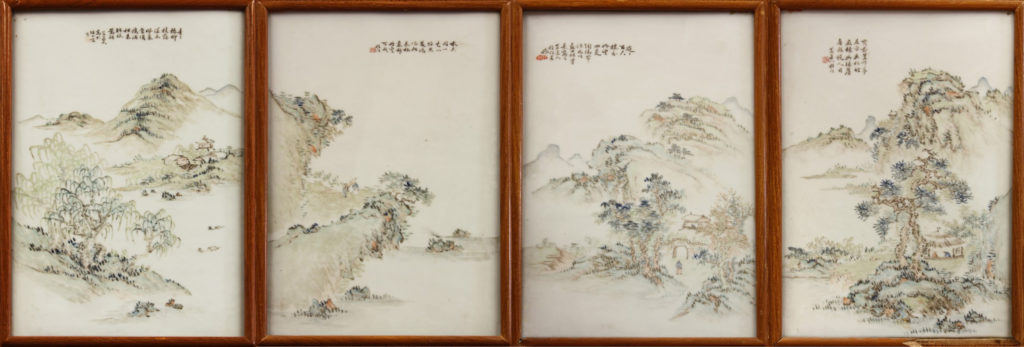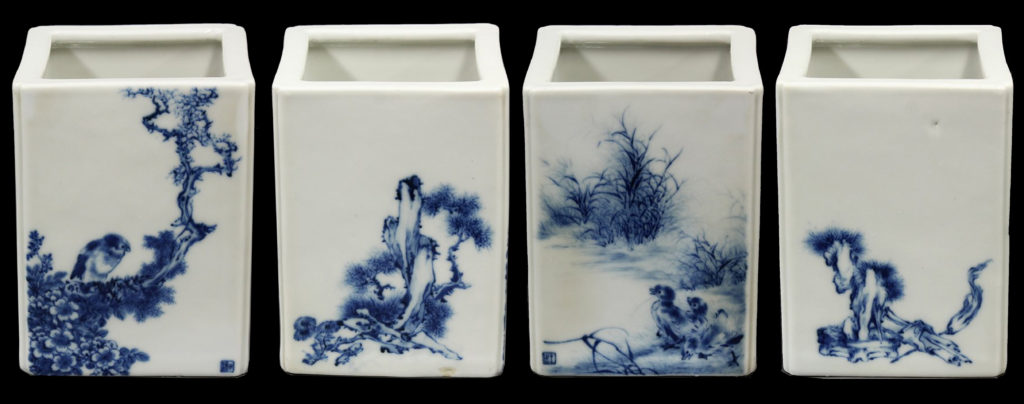Jingdezhen – The Porcelain Capital
In the dynastic past, the highest quality of Jingdezhen porcelain productions was dictated by the taste of the imperial family. However, at the end of the Qing dynasty (1644-1912) and Republic period (1912–1949), such boundaries began to break down. Given the internal strife and political struggles with the Western World in the 19th century, China commissions began to decrease and in order to survive artisans needed to appeal to greater audiences. Target groups began to broaden and now included officials, scholars, and the upper mercantile class.

Polychrome enameled porcelain plaques expertly painted in ‘qianjiang’ or ‘qianjiang cai’ palette enamels with figures in a landscape setting
It was during this turbulent time of change that a new porcelain aesthetic emerged. Now known as ‘qianjiang cai,’ this style is characterized by light and subtle tones in contrast to the bright and opaque enamels that had previously been popular. Literally translating to “light umber,” ‘qianjiang cai’ was inspired by literati paintings of the Song and Yuan dynasties, in which an atmospheric quality is achieved through the graduation of ink tones. In order to attract the scholarly class, the bright minds at Jingdezhen replicated literati paintings onto porcelain. Catering to the masses, these soft-toned enamels were used not only for landscape paintings. Popular subject matters also included: birds-and-flowers, still-lifes of auspicious objects, and figures from history, legend or religion.
With the strong pool of artisans at Jingdezhen, one had to be innovative and creative in order to survive. Some of the success stories that grew out of the movement are names that live on today including the famous ‘Zhushan bayou’ (Eight Friends of Zhushan) so-called because they met on the full moon of every lunar month. Each of them had their areas of strength and preferred aesthetic tastes. One of the eight friends was Wang Qi, generally recognized as the leader of the group, who was known for his depiction of figures. The use of graduated soft tones, particularly when applied to subtle facial features, create some of the mesmerizing images which continue to capture our attention today.
Another well-known artist of this time is Wang Bu. He worked towards a more realistic style too but not in the muted colors of ‘qianjiang cai.’ Wang Bu specialized in working with ceramics and was officially trained in the blue and white art. He breathed life into his depictions of birds and flowers through his innovative techniques of manipulating a lightness of cobalt in contrast to its dense appearance of the past.
The artists of Jingdezhen in the late 19th and early 20th century experienced a change of time but were able to survive through great creativity and adaptability.
